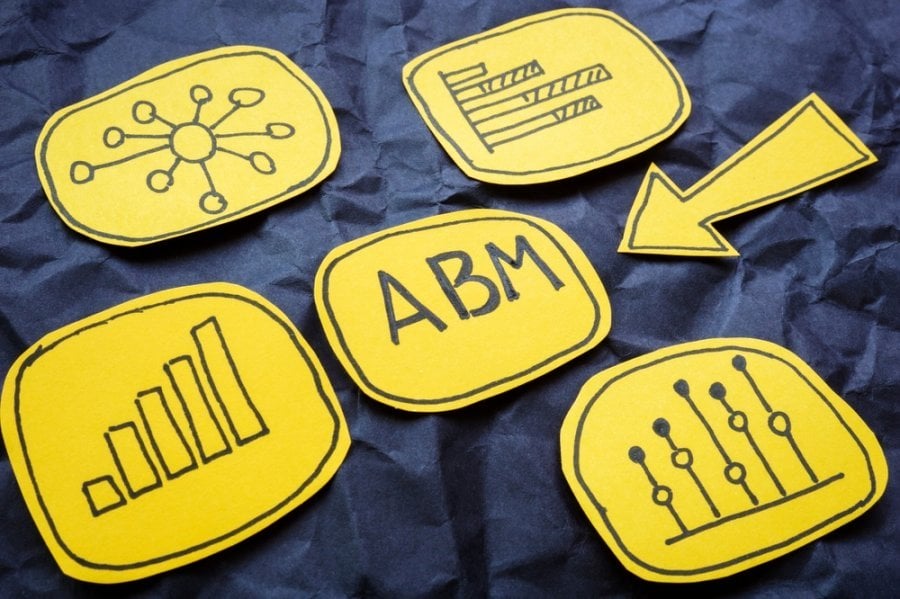
5 Easy Steps To Build Your Manufacturing Brand Position
Brand positioning helps manufacturers stand out from competitors. It highlights what makes a company’s products or services unique, essential for attracting customers and building loyalty.
A part-time chief marketing manager improves your branding through these five steps:
 To ensure branding campaigns resonate, establish the target audience. Understanding their needs and preferences helps launch targeted campaigns and develop products that meet customer demands.
A competent marketing manager uses these strategies to define the audience:
To ensure branding campaigns resonate, establish the target audience. Understanding their needs and preferences helps launch targeted campaigns and develop products that meet customer demands.
A competent marketing manager uses these strategies to define the audience:
 Effective brand messaging helps distinguish the brand from competitors by communicating what differentiates the products or services. This usually relates to quality, customization, lead times, sustainability, and innovation in manufacturing.
Conveying your competitive advantages through branding attracts new customers who value those specific traits while reinforcing to existing customers they made the right choice.
Develop a persuasive, authentic, relatable brand message through the following:
Effective brand messaging helps distinguish the brand from competitors by communicating what differentiates the products or services. This usually relates to quality, customization, lead times, sustainability, and innovation in manufacturing.
Conveying your competitive advantages through branding attracts new customers who value those specific traits while reinforcing to existing customers they made the right choice.
Develop a persuasive, authentic, relatable brand message through the following:
- Defining the unique value proposition (UVP)
- Knowing the target audience
- Conducting competitive analysis
- Crafting the brand messaging
- Establishing a visual identity
Want to know how to get a Chief Marketing Officer for your Professional Services Organization without the cost of a full-time employee?
1. Define the Unique Value Proposition
The first step to improving the brand position is defining your unique value proposition (UVP), which delivers a clear and concise message about the product’s benefits and value. It helps customers understand why they should buy from you rather than competitors. Create a compelling UVP with these strategies:- Thoroughly research and understand the target market. Who are your ideal customers? What are their needs, challenges, and pain points? Gather insights to inform your UVP.
- Evaluate your strengths and unique selling points. What sets you apart from competitors? Leverage your primary advantages and capabilities when developing the UVP.
- Analyze your competitors to know their strengths and weaknesses. Identify gaps or opportunities to differentiate yourself from the rest.
- Articulate the benefits to customers. What specific problems do you solve for them? What benefits do they derive from choosing your products or services over your competitors? Communicate these advantages in your UVP.
- Integrate the UVP across all marketing channels and touchpoints. Consistency is critical to positioning the brand as a manufacturing industry expert.
2. Know the Target Audience
 To ensure branding campaigns resonate, establish the target audience. Understanding their needs and preferences helps launch targeted campaigns and develop products that meet customer demands.
A competent marketing manager uses these strategies to define the audience:
To ensure branding campaigns resonate, establish the target audience. Understanding their needs and preferences helps launch targeted campaigns and develop products that meet customer demands.
A competent marketing manager uses these strategies to define the audience:
- Research the market to understand the psychographics and demographics of potential customers. Use surveys, focus groups, interviews, and data analytics tools to gather insights into their preferences, pain points, and purchasing behaviors.
- Divide the market into segments based on industry, geographic location, and product preferences. Tailor branding efforts and product offerings to each segment’s characteristics.
- Analyze the existing customer base to identify patterns and trends. Look for common characteristics and purchasing behaviors among the most valuable customers to identify and effectively target similar prospects.
- Study the competitors to understand their target audience and market positioning. Look for underserved or overlooked segments to target and capitalize on the opportunity to dominate a niche.
- Build relationships with industry associations, trade organizations, suppliers, distributors, and other stakeholders. Engage in networking events, conferences, and trade shows to connect with potential customers and gain more insights into their preferences.
- Solicit feedback from customers through various channels. Use the feedback to refine products, services, and marketing strategies to better meet customer needs and define the branding strategy.
3. Perform Competitive Analysis
A thorough competitive analysis compares your performance to that of competitors. It helps identify successful strategies to continue using and highlights areas where other companies outperform, prompting adjustments or improvements. Examine the competition with these tips:- Compile a list of direct and indirect competitors. Direct competitors offer similar products or services, while indirect ones serve the same need through different means. The list of competitors gives a more holistic view of the competitive landscape.
- Analyze the products and services offered by each competitor. Look at their features, quality, pricing, and unique selling proposition. Use the information to innovate your products and further differentiate the brand.
- Determine the market share held by each competitor. This showcases their relative strength and position in the market.
- Analyze their pricing strategies. Compare pricing models, discounts, promotions, and overall price positioning. Use the information to keep your price competitive.
- Examine how competitors distribute their products. Study their distribution networks, channels, and partnerships to understand how they reach customers. Leverage the best distribution strategies and execute better ones.
- Investigate their marketing strategies. These include advertising campaigns, branding efforts, digital marketing tactics, and social media presence. Find the gaps and determine how to outshine them.
- Read customer reviews, feedback, and complaints about your competitors’ products and services. They provide insights into customer satisfaction and areas for improvement. Attract them by meeting their unfulfilled needs.
4. Craft the Brand Message
 Effective brand messaging helps distinguish the brand from competitors by communicating what differentiates the products or services. This usually relates to quality, customization, lead times, sustainability, and innovation in manufacturing.
Conveying your competitive advantages through branding attracts new customers who value those specific traits while reinforcing to existing customers they made the right choice.
Develop a persuasive, authentic, relatable brand message through the following:
Effective brand messaging helps distinguish the brand from competitors by communicating what differentiates the products or services. This usually relates to quality, customization, lead times, sustainability, and innovation in manufacturing.
Conveying your competitive advantages through branding attracts new customers who value those specific traits while reinforcing to existing customers they made the right choice.
Develop a persuasive, authentic, relatable brand message through the following:
- Emphasize attributes that sell the brand, such as high-quality products, excellent customer service, or attention to detail. Use language that conveys precision, reliability, and durability to reassure customers of the product’s value.
- Share the story behind the business, especially its inspiration, values, and journey. Personal narratives resonate with customers and humanize the brand, making it more relatable and memorable.
- Develop messaging that evokes emotions and connects with the aspirations and desires of the target audience. Tapping into emotions makes brands more compelling and memorable, whether through a sense of pride, nostalgia, or aspiration.
- Encourage customers to share their experiences through reviews, testimonials, and user-generated content. Incorporate the feedback into the brand messaging to build credibility and trust.
- Be honest and transparent in your brand messaging, whether about product features, pricing, or business practices. Authenticity resonates with customers, breeds trust, and fosters long-term relationships.
- Be consistent. Use the same message across all communication channels. A cohesive message reinforces the brand identity and improves recognition.
5. Develop a Cohesive Visual Brand Identity
Finally, a distinct visual identity helps the brand stand out and become recognizable among competitors. The visuals often remind customers of what makes your brand better: quality, custom work, sustainability, or innovative features. Use these tips to develop a cohesive visual identity:- Create a distinctive logo that reflects the business’s identity, values, and industry. Consider incorporating elements that symbolize craftsmanship, innovation, or products.
- Design a salable logo so it works well across different platforms and devices.
- Choose a color palette that resonates with the brand’s personality and the emotions you want to evoke. Consider colors that convey reliability and quality, which are essential for manufacturing.
- Select fonts that complement the brand’s visual identity and remain legible in various sizes and formats. Usually, manufacturing companies prefer modern and clean fonts because they look professional and are easier to read.
- Incorporate visual elements that reflect the essence of the business. Examples include images of your products, manufacturing processes, or industry-related symbols. Choose high-quality, authentic visuals that align with the brand’s messaging.
- Invest in packaging design that reflects the brand. Consider how colors, typography, and imagery enhance the unboxing experience for customers.
Summing Up
These five steps help position your brand as a trustworthy, professional, authentic industry leader. Hire a part-time chief marketing manager to oversee the brand messaging strategy to maximize results. CMOs highlight what sets you apart, craft campaigns that resonate with the audience, and track engagement. They develop a consistent message across channels, helping you reach prospects, boost sales, retain customers, and grow the business. With a clear brand narrative, the company becomes a top choice for customers. Need a marketing partner for your business? Contact Digital Authority Partners (DAP) today and schedule a free meeting.Want To Meet Our Expert Team?
Book a meeting directly here



